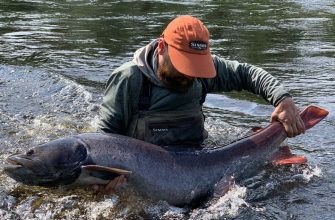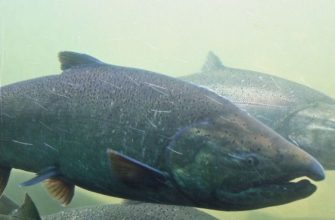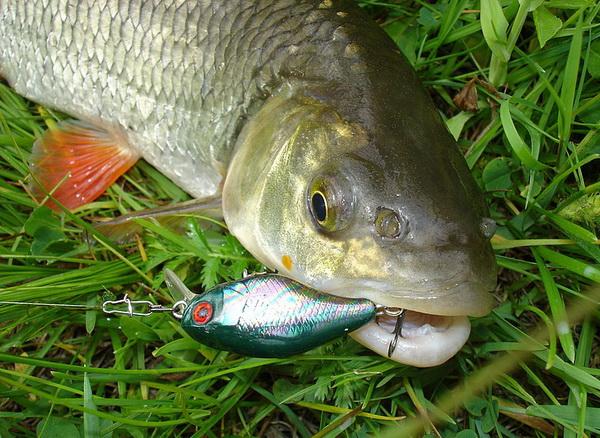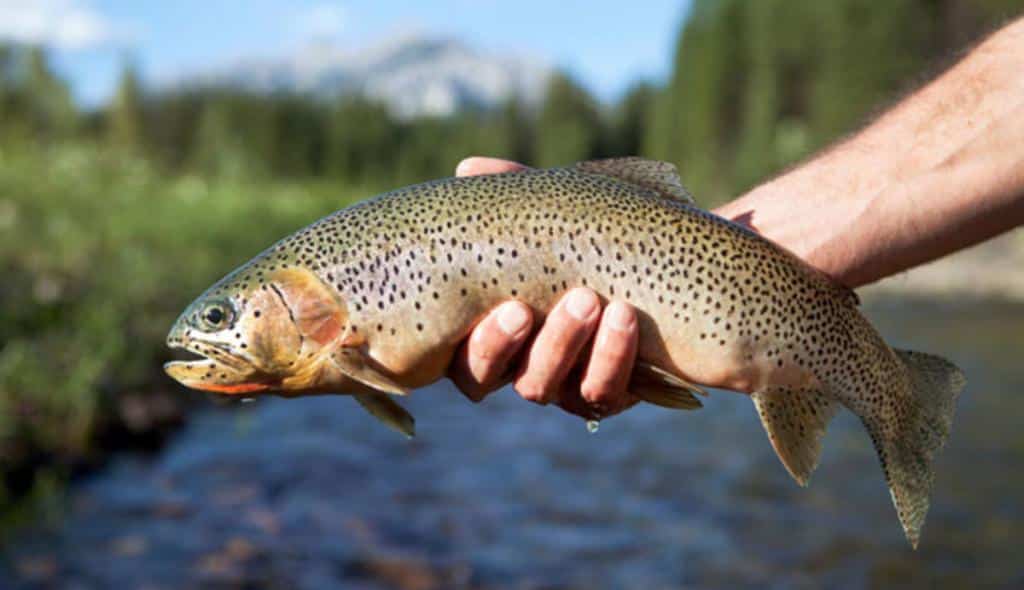Kunja fish is a little-known representative of the salmon family. Anglers love it for their passion: the process of playing this aggressive fish is incredibly interesting. It is also appreciated by gourmets for its taste.
- Kunja fish – what kind of fish is it, description with photo, habitat
- Diet
- Methods for catching kunja, selection and collection of tackle
- Spinning tackle for catching kunja
- Float tackle
- Catching with an elastic band
- Taste qualities and benefits of kunja meat
- Price in RF
- Recipes for cooking kunja with photos and videos: salting, fried, in the oven and others
- Salting
- Fried kunja
- On the grill
- Boiled kunja
- Kunja in the oven
- Stew
- Поделиться ссылкой:
Kunja fish – what kind of fish is it, description with photo, habitat
Kunja belongs to the salmon family, subspecies ”
char ” – this means that the fish lacks scales. Outwardly, it is difficult to confuse kunja with other fish: its body is painted in a bright amber color with orange fins.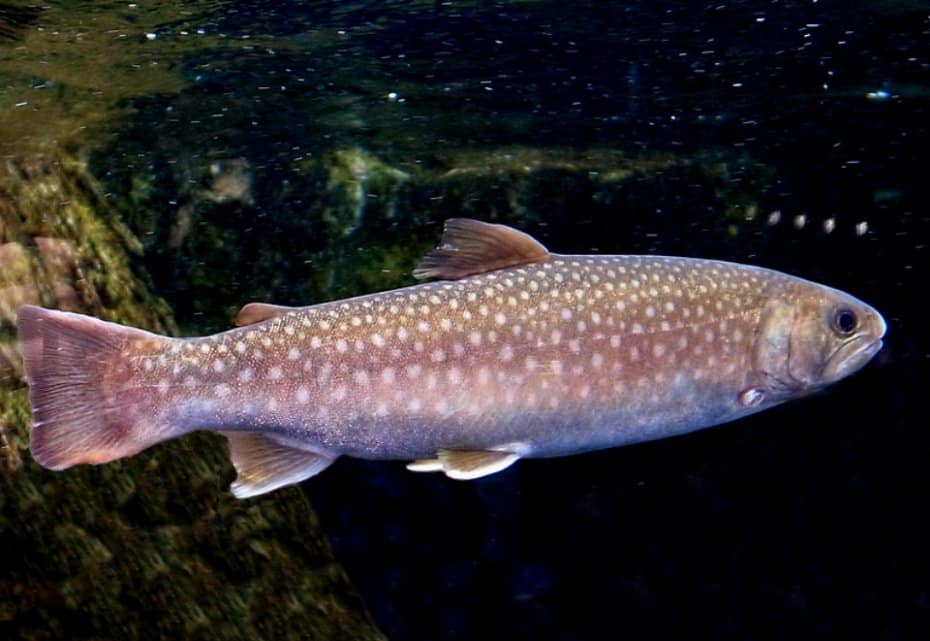 The average weight of kunja reaches 3-3.5 kg with a body length of 1 m. A trophy fish weighing 10 kg is considered, but such specimens are very rare. There are two types of kunja:
The average weight of kunja reaches 3-3.5 kg with a body length of 1 m. A trophy fish weighing 10 kg is considered, but such specimens are very rare. There are two types of kunja:
- Residential . Lives and reproduces in one body of water;
- Checkpoint . Part of his life he spends at sea, part in rivers flowing with fresh water.
Kunja is found only in the wild. The fact is that this fish requires both fresh and salt water (even inhabited fish spawn in the tributaries of lakes and in the beds of streams), and such conditions cannot be created in fish farms.
This fish is found in:
- Sea of Japan;
- The Sea of Okhotsk;
- The Bering Sea;
- in the rivers of Kamchatka;
- in the rivers of Japan;
- in the Amur river;
- in the northwest Pacific.
Attention! A freshwater species of kunja also lives in the Magadan region.
Kunja is in motion almost all the time. She rests for a short time. Therefore, some believe that it causes serious damage to aquatic life with its uncontrolled hunting. This fish is always where it has plenty of food, it follows the schools of fry. If there are few fish in the reservoir, kunja prefers to hunt from ambush. As shelters, she chooses any height differences at the bottom, snags, fallen trees, thickets of aquatic vegetation. If the reservoir is teeming with fish, then Kunja rarely uses shelters, fearlessly walking around the reservoir and attacking almost everything that seems edible to her.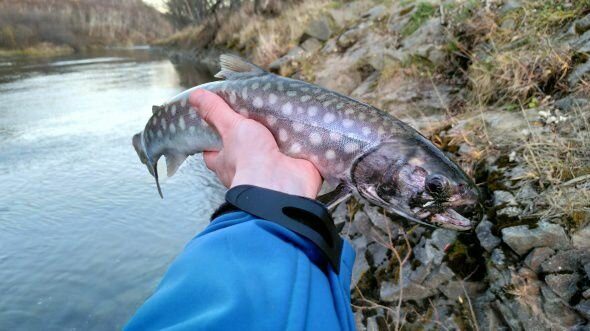
Diet
Kunja belongs to predatory fish species, therefore food of animal origin predominates in its diet. Its main food base is small fish (minnows, minnows, gobies, etc.). Do not disdain kunja and larvae of shrimps and insects.
Methods for catching kunja, selection and collection of tackle
Kunja is a fish that allows you to test your skills in practice. She is so careful that, having seen a fisherman from a distance, she will move away from the coast and it will be very difficult to catch her. It is also quite powerful fish, capable of providing tangible resistance when playing. If the coonja does not feel a threat, then its bite can break the rod or break the line. You can catch this fish with different tackles.
Spinning tackle for catching kunja
A rod with a test of 5-21g, medium action will suffice. When fishing from a boat, a length of 180-210 cm is enough, when fishing from the shore – from 210 cm. The line is monofilament, with a diameter of 0.22-0.25 mm. You can choose a
fluorocarbon lead , but its tensile strength should be lower than that of the main line.
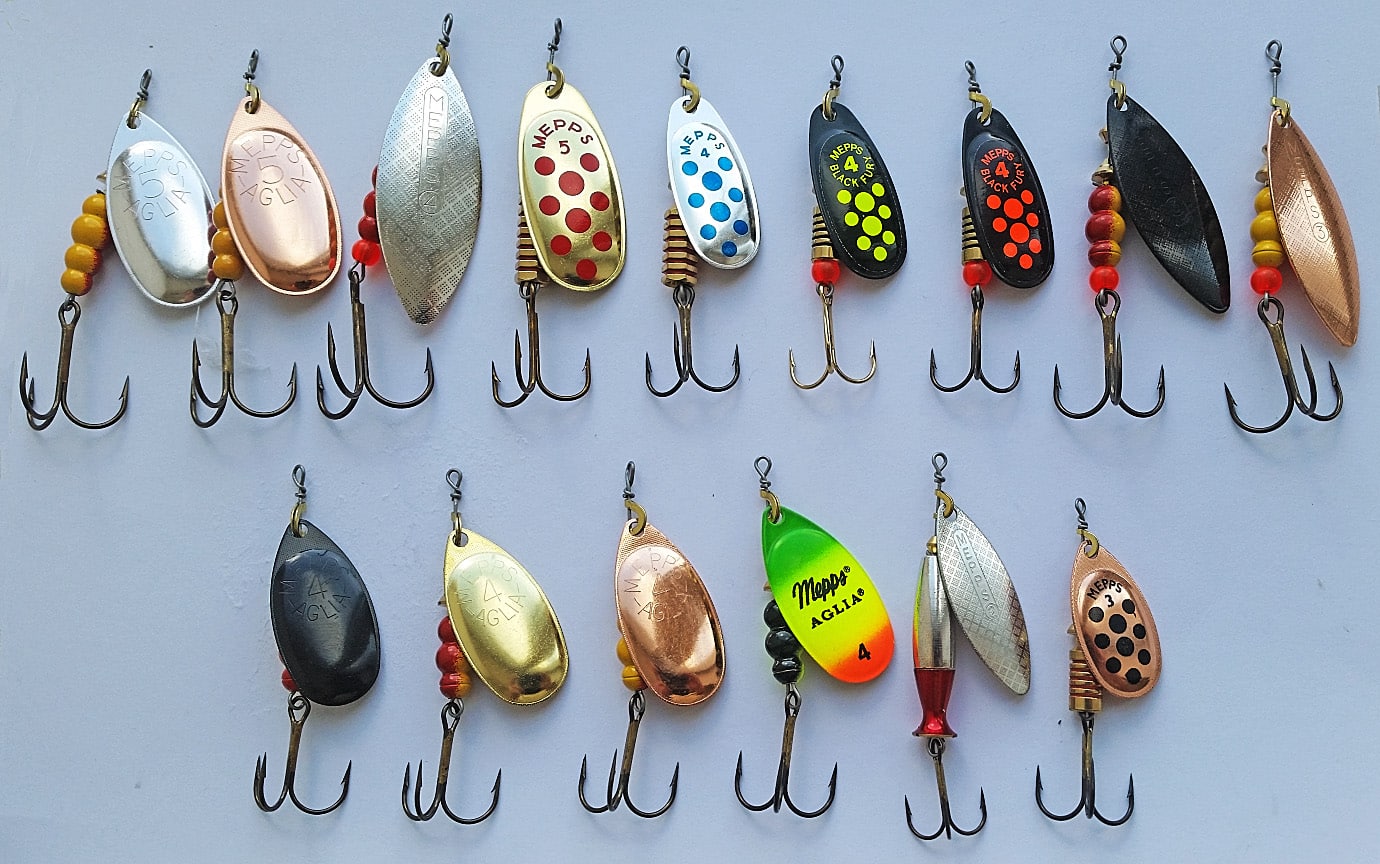
The most active biting is observed within 30-60 minutes after dawn, and also after 18:00, although you can catch kunja during the day.
Float tackle
The float tackle is collected depending on the reservoir. In principle, it is possible to use a regular
match rod without a reel, although the use of telescopic “poles” is not prohibited. In this case, it is better to use a spinning coil. The length of the rod is 4 m when fishing from the shore in small reservoirs and from a boat, for long casts – 5-6 m. Line 0.2-0.25 mm. The smaller the float, the better – it is important not to scare the fish away. Typically small, shallow barrel floats are used. The
It’s important to know! The carrying capacity of the float can be anything – it is impossible to miss the bite of the kunja.
Classic rigging on the current: diverter leash. If there is current in the body of water, then the weight of the sinker must be sufficient to keep the bait in one place. At a distance of 60-70 cm from the sinker, a leash is attached, which should be thinner than the main line. Instead of hooks, jigs are used with a planting in the form of maggots, meat or bacon. Any of the available rigs can be used for fishing in stagnant water.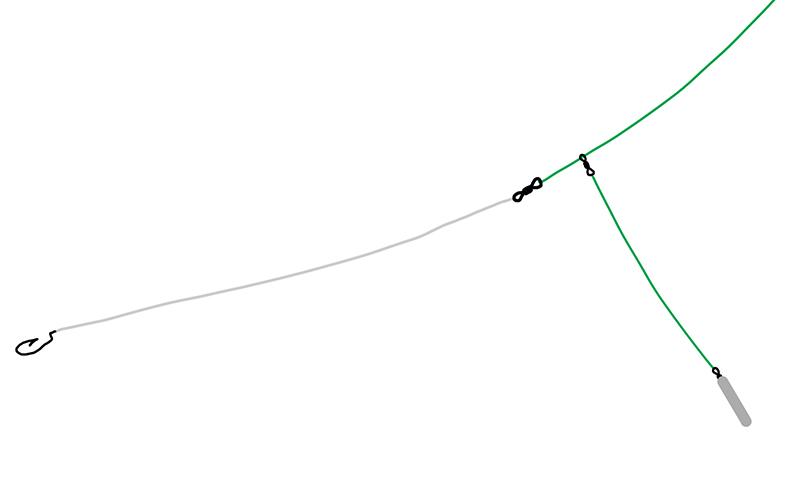 Rigging for a float rod with a diverting line [/ caption]
Rigging for a float rod with a diverting line [/ caption]
Important! When fishing in stagnant water, it is important to ensure that the bait is playing by twitching the rod from time to time.
Catching with an elastic band
Quite an
interesting way to catch kunja. The first bite of a fish is always aggressive, and such a tackle allows you to cushion jerks. The gum itself is square, triangular and oval. The latter option is preferable because it is stronger than the others. The elastic band allows you to make long casts without much effort, which is very important when the kunja leaves the shore. The effective casting distance can be calculated based on the length of the rubber band itself. The 1: 3 rule applies here. For example, with a rubber band length of 10 m, you can apply the bait at 30 m. For longer casts, you can connect two rubber bands with a length of 10 m, then you can already throw at 55-60 m. The tackle scheme looks something like this: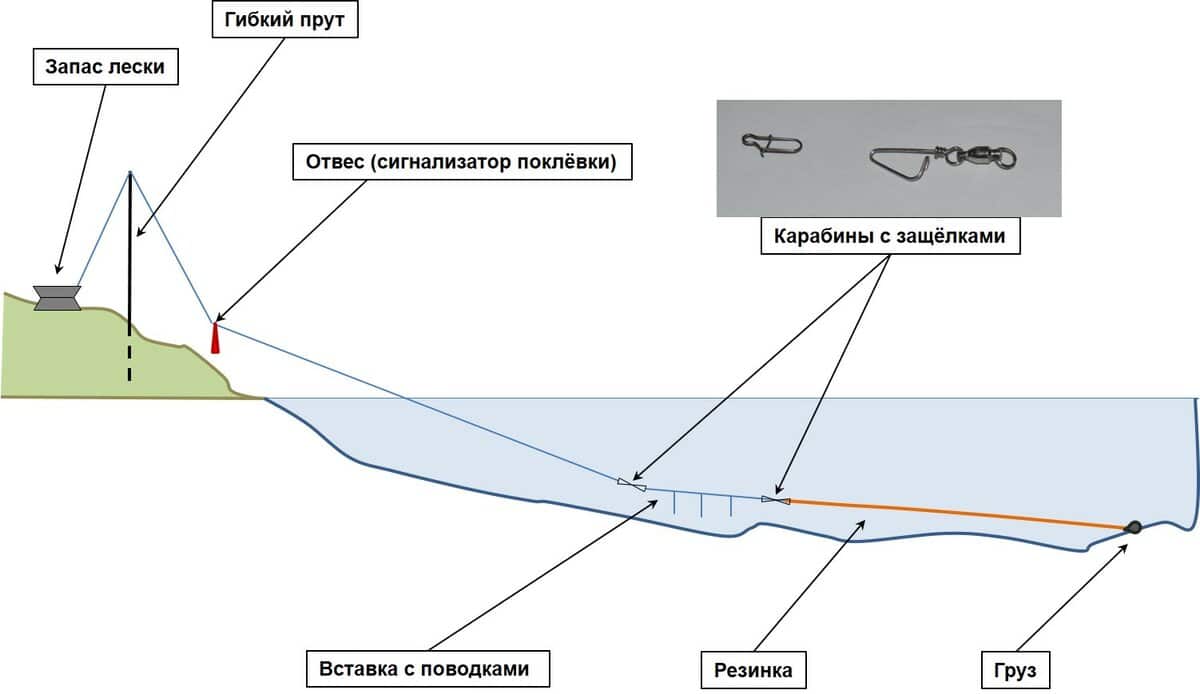 The same maggots, bacon, bloodworms or worms are used as bait when fishing with an elastic band. For better buoyancy, you can string foam on the hook. The tactic is to find fish sites. Moreover, after casting, there will be a lull for some time – a frightened fish needs time to return to its previous point, so you should not leave the place if there are no bites for 50-60 minutes.
The same maggots, bacon, bloodworms or worms are used as bait when fishing with an elastic band. For better buoyancy, you can string foam on the hook. The tactic is to find fish sites. Moreover, after casting, there will be a lull for some time – a frightened fish needs time to return to its previous point, so you should not leave the place if there are no bites for 50-60 minutes.
A little trick when casting: delivering the lure to a distance of up to 80 m is not difficult if you use a feeder or spinning rod as an auxiliary tool .
A small piece of braid is tied to the sinker at the end of the elastic, after which it is wound on a spinning reel without tying it. Next, a cast is performed, the cord slides off the spool and the load flies as far as possible. The main part of the line is also fixed firmly on the bank. Fishing for kunja in Sakhalin: https://youtu.be/qA9YTMBfbeo
Taste qualities and benefits of kunja meat
Kunja meat has a deep red color and tastes like trout. It contains a large amount of microelements necessary for the body: phosphorus, zinc, iron, potassium, riboflavin, niacin, etc. Kunja meat is low in calories (about 115-150 kcal per 100 g), so this fish often becomes an ingredient in dietary dishes. Meat contains B vitamins, which are responsible for the growth of hair and nails, vitamin C, which has a general strengthening effect on the body.
However, fish should be used with caution by people with seafood intolerance. Also, in case of problems with the gastrointestinal tract, it is advisable to consult a doctor.
Price in RF
Kunja meat is prized for its lack of bones. Among all salmonids, this fish is considered one of the most affordable. So, for example, the cost of 1 kg of frozen carcass costs 300 rubles, and fresh – no more than 350-370 rubles.
Recipes for cooking kunja with photos and videos: salting, fried, in the oven and others
Kunja is not only tasty, but also healthy fish, which can be cooked in different ways.
Salting
Salting is one of the most popular ways to prepare kunja. For cooking you will need:
- 1 kg of fish;
- rock salt – 3 tbsp. l .;
- sugar – 1 tbsp. l .;
- black pepper – 10 peas.
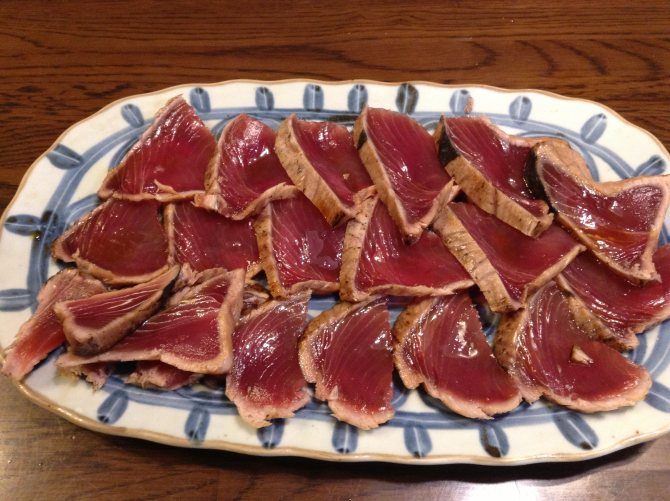
- Rinse the fish thoroughly and then dry it. The easiest way to remove excess moisture is with napkins.
- Separate the head, then cut the fish along the ridge into two parts.
- Stir the sugar and salt and rub each piece of fish on both sides with the resulting mixture.
- Prepare a glass container (rinse and dry), then put one part of the fish skin down, and on top of it another part skin up.
- Put sweet peas on top of the fish.
- Wrap glass containers with cling film in several layers, leave in the kitchen for 1 hour, and then place in the refrigerator.
- After 6 hours, remove the fish from the refrigerator, drain off excess liquid and excess spices.
- Cut the fish into pieces.
Salted kunja – video recipe: https://youtu.be/x2e0TyVbrY4 Salted kunja can be served with sandwiches or just like that.
Fried kunja
In this form, the fish can be served with fried potatoes or rice. Ingredients:
- 500 g kunja fillet;
- 500 g flour;
- salt, spices to taste;
- vegetable oil – 4-5 tbsp. l .;
- bay leaf 1 pc .;
- flour.
Preparation:
- First, you need to rinse the fish well, clean it of fins, viscera, separate the head, then rinse the fish again under running cold water and let it dry.
- Cut the fish into convenient pieces (you can either across the carcass or lengthwise), then salt, add black pepper, bay leaves and leave in the kitchen for about 30 minutes.
- Then remove the bay leaf, dip the fish pieces in flour and fry in vegetable oil until golden brown.
If you wish, you can decorate the fish with sprigs of herbs, lemon wedges.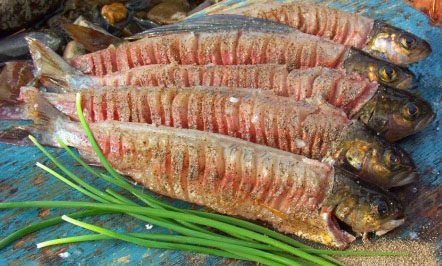
On the grill
The easiest way to cook knuja on the grill is with the grill. Salt and pepper the fish, then fry on charcoal until golden brown, turning it over every 5 minutes. In the cooking process, it is recommended to use apple, plum, rowan or alder coals.
Boiled kunja
Kunja prepared according to this recipe is distinguished by very soft and tasty meat. Ingredients:
- 1 carcass of fish;
- husk from 6-8 onions;
- Bay leaf;
- salt / spices to taste;
- 1000 ml of water;
- peppercorns.
Cooking process:
- Rinse the fish, dry it, peel the entrails and fins, then cut into equal pieces and let dry.
- Bring the water to a boil, add a couple of bay leaves, 5-6 peppercorns, salt and onion husks.
- Cook the brine for 5 minutes, then put the fish in a saucepan, cover, bring to a boil again and cook over low heat for 3-5 minutes.
Attention! It is important that the water completely covers the fish.
Kunja in the oven
Kunja cooked in the oven will suit almost any side dish and will look appropriate both on an everyday and on a festive table. Ingredients:
- 1 carcass of fish weighing 800-1000 grams;
- 3 tbsp. l. sunflower oil;
- 1 head of onion;
- salt, pepper, seasoning for fish;
- greenery.
Cooking process:
- Wash the fish, clean the insides, remove the fins and head, then rinse and dry.
- Cut the onion into rings, then mix with salt, pepper and fish seasoning.
- Put the spices and onions inside the fish and leave it to stand for 10-15 minutes.
- Grease a baking sheet with oil, put the fish and bake it in the oven for half an hour at 180 degrees, decorate with herbs before serving.
Kunja fish in the oven in foil – step-by-step video recipe: https://youtu.be/iWYHBOqUS98
Stew
Such a dish is suitable even for diet food and can be served not only hot, but also cold. Ingredients:
- 500 g kunja fillet;
- 500 g carrots;
- 100 g of onions;
- salt, black pepper, herbs;
- frying oil.
Cooking process:
- Cut the fish fillet into convenient slices.
- Cut the onion into rings and fry in vegetable oil until half cooked.
- Grate the carrots on a coarse grater and add to the onion, then salt, pepper and fry until tender.
- Put the fish on top, then reduce the heat and cover the pan with a lid.
- After 5-7 minutes, pour 200 ml of warm water into the pan, after another 5 minutes add black pepper and herbs.

